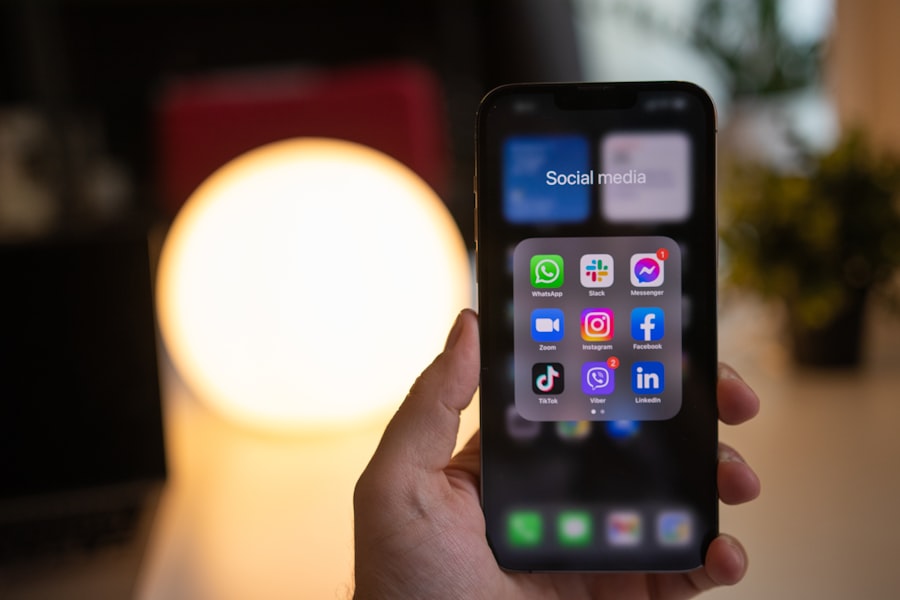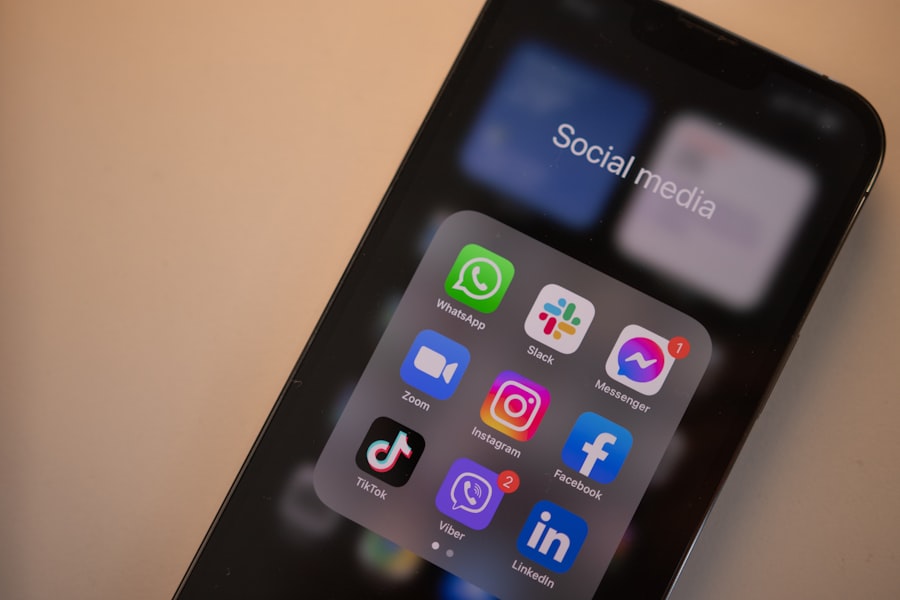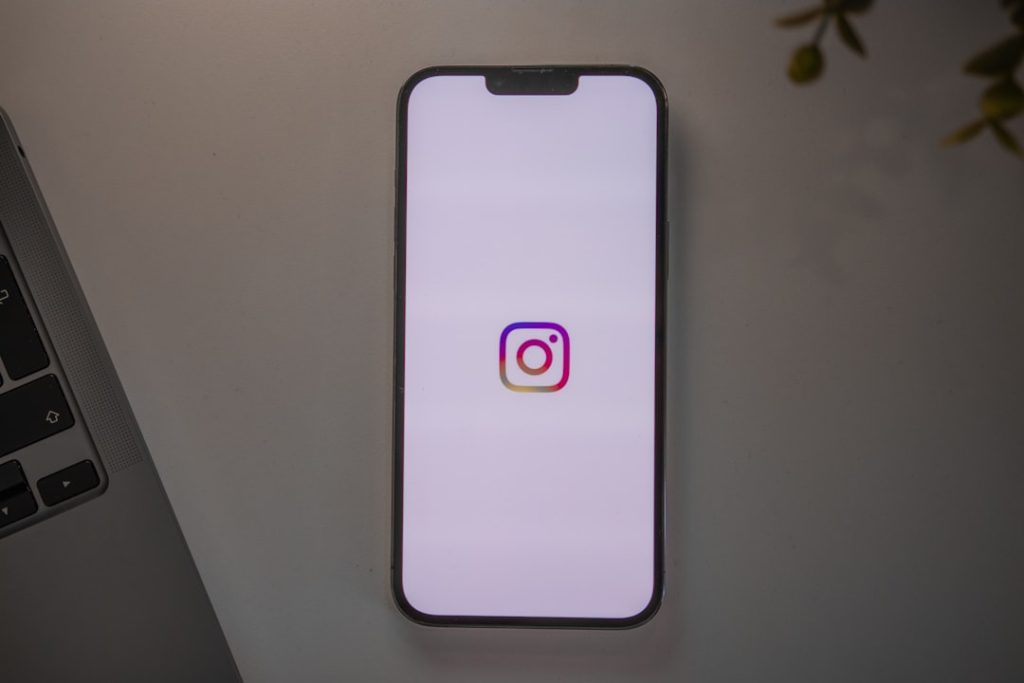Influencer marketing has emerged as a powerful tool in the digital marketing landscape, leveraging the reach and credibility of individuals who have established a significant following on social media platforms. These influencers, often seen as trusted figures within their niches, can sway the opinions and purchasing decisions of their audience. The essence of influencer marketing lies in the ability to connect brands with consumers in a more authentic and relatable manner than traditional advertising methods.
By collaborating with influencers, brands can tap into their established trust and rapport with followers, creating a more organic promotional environment. The rise of influencer marketing can be attributed to several factors, including the proliferation of social media and the shift in consumer behavior towards seeking recommendations from peers rather than brands. According to a study by Nielsen, 92% of consumers trust recommendations from individuals over brands, highlighting the effectiveness of influencer endorsements.
This trust is particularly potent among younger demographics, such as Millennials and Gen Z, who are more likely to engage with content that feels genuine and relatable. As a result, brands are increasingly allocating significant portions of their marketing budgets to influencer partnerships, recognizing the potential for higher engagement rates and improved brand loyalty.
Key Takeaways
- Influencer marketing relies on partnering with social media personalities to promote brands authentically.
- Choosing the right agency involves assessing expertise, influencer networks, and alignment with brand goals.
- A successful strategy includes clear objectives, target audience understanding, and creative collaboration.
- Measuring campaign impact requires tracking engagement, reach, conversions, and ROI metrics.
- Building long-term influencer relationships fosters trust, consistency, and sustained brand advocacy.
Finding the Right Influencer Marketing Agency
Selecting the right influencer marketing agency is crucial for brands looking to maximize their return on investment. The ideal agency should not only have a deep understanding of the influencer landscape but also possess the ability to align influencers with the brand’s values and target audience. A thorough evaluation of potential agencies involves examining their past campaigns, client testimonials, and case studies to gauge their effectiveness in delivering results.
Agencies that specialize in specific niches or industries may offer additional advantages, as they often have established relationships with relevant influencers and a better grasp of the unique challenges within that sector. Moreover, it is essential to consider the agency’s approach to influencer selection and campaign management. A reputable agency will employ data-driven strategies to identify influencers whose audience demographics align with the brand’s target market.
They should also prioritize transparency in their processes, providing clear metrics for measuring campaign success. Engaging in discussions about the agency’s creative strategies and how they plan to foster authentic collaborations can further ensure that the partnership will yield fruitful results. Ultimately, finding an agency that resonates with the brand’s ethos and demonstrates a commitment to innovation can significantly enhance the effectiveness of influencer marketing efforts.
Crafting a Successful Influencer Marketing Strategy

A well-crafted influencer marketing strategy serves as the backbone of any successful campaign. It begins with defining clear objectives that align with broader marketing goals, whether that be increasing brand awareness, driving sales, or enhancing customer engagement. Once objectives are established, brands must identify their target audience and understand their preferences, behaviors, and pain points.
This knowledge will inform not only the choice of influencers but also the type of content that will resonate most effectively with potential customers. Content creation is a pivotal aspect of influencer marketing strategy. Brands should collaborate with influencers to develop authentic content that reflects both the influencer’s voice and the brand’s messaging.
This could range from sponsored posts and stories to unboxing videos or live Q&A sessions. The key is to ensure that the content feels organic rather than forced, as audiences are quick to detect inauthenticity. Additionally, incorporating interactive elements such as polls or giveaways can further engage followers and encourage participation.
By fostering creativity and allowing influencers the freedom to express their unique style while promoting the brand, companies can create compelling narratives that captivate audiences.
Leveraging the Power of Social Media Influencers
| Metric | Description | Typical Range | Impact on Campaign |
|---|---|---|---|
| Engagement Rate | Percentage of audience interacting with influencer content (likes, comments, shares) | 1% – 10% | Higher engagement indicates stronger audience connection and campaign effectiveness |
| Follower Count | Number of followers the influencer has on social media platforms | 10,000 – 10,000,000+ | Larger follower base increases potential reach but may reduce engagement rate |
| Conversion Rate | Percentage of audience taking desired action (purchase, sign-up) after influencer promotion | 0.5% – 5% | Directly measures campaign ROI and effectiveness in driving sales or leads |
| Cost per Engagement (CPE) | Average cost incurred for each engagement generated through influencer content | Varies widely by influencer tier and platform | Helps optimize budget allocation for maximum engagement |
| Audience Demographics | Age, gender, location, and interests of influencer’s followers | Varies by influencer | Ensures alignment with target market for better campaign relevance |
| Content Reach | Number of unique users who see the influencer’s content | Depends on follower count and platform algorithms | Indicates potential visibility and brand awareness generated |
| Brand Mentions | Number of times the brand is mentioned or tagged by the influencer | Varies by campaign length and influencer activity | Measures brand exposure and influencer advocacy |
Social media influencers wield significant power in shaping consumer perceptions and behaviors. Platforms like Instagram, TikTok, YouTube, and Twitter have become breeding grounds for influencers who curate content that resonates with their followers. Brands can leverage this power by strategically partnering with influencers who align with their values and target demographics.
For instance, a beauty brand might collaborate with a makeup artist known for their expertise in skincare, while a fitness company could partner with a health enthusiast who shares workout tips and nutrition advice. The effectiveness of influencer partnerships is often amplified by the unique characteristics of each platform. For example, Instagram’s visual-centric nature makes it ideal for lifestyle brands looking to showcase products through aesthetically pleasing imagery or engaging video content.
TikTok, on the other hand, thrives on short-form videos that encourage creativity and spontaneity, making it suitable for brands aiming to reach younger audiences through entertaining challenges or trends. By understanding the nuances of each platform and tailoring content accordingly, brands can maximize their reach and impact within specific communities.
Measuring the Impact of Influencer Marketing Campaigns
Measuring the success of influencer marketing campaigns is essential for understanding their effectiveness and optimizing future efforts. Key performance indicators (KPIs) such as engagement rates, reach, impressions, website traffic, and conversion rates provide valuable insights into how well a campaign is performing. Engagement metrics—likes, comments, shares—are particularly important as they indicate how well the content resonates with the audience.
Tools like Google Analytics can help track referral traffic from influencer posts to a brand’s website, allowing marketers to assess how many visitors convert into customers. Beyond quantitative metrics, qualitative analysis also plays a vital role in evaluating campaign success. Monitoring sentiment analysis through comments and feedback can provide insights into how audiences perceive both the influencer and the brand.
Additionally, conducting surveys or focus groups post-campaign can yield valuable information about brand recall and consumer attitudes towards the product or service promoted by the influencer. By combining both quantitative and qualitative data, brands can gain a comprehensive understanding of their campaign’s impact and make informed decisions for future strategies.
Building Long-Term Relationships with Influencers

Establishing long-term relationships with influencers can yield significant benefits for brands seeking sustained engagement and loyalty from their audience. Rather than viewing influencer partnerships as one-off transactions, brands should focus on cultivating ongoing collaborations that foster mutual growth. This approach not only enhances authenticity but also allows influencers to become more deeply integrated into the brand narrative over time.
For instance, a fashion brand might work with an influencer on multiple campaigns throughout the year, allowing them to showcase seasonal collections while building a consistent storyline around their personal style evolution. To nurture these relationships effectively, brands should prioritize open communication and collaboration. Regular check-ins to discuss campaign performance, feedback on content creation, and brainstorming sessions for future projects can strengthen ties between brands and influencers.
Additionally, recognizing and celebrating an influencer’s achievements—whether through shout-outs on social media or invitations to exclusive events—can reinforce loyalty and commitment. By investing in these relationships, brands can create a network of advocates who genuinely believe in their products and are motivated to share their experiences with their followers.
Avoiding Common Pitfalls in Influencer Marketing
While influencer marketing offers immense potential for brands, there are several common pitfalls that can undermine campaign success if not addressed proactively. One major challenge is selecting influencers based solely on follower count rather than engagement quality or relevance to the brand’s niche. An influencer with millions of followers may not necessarily translate into effective reach if their audience is not genuinely interested in the brand’s offerings.
Therefore, conducting thorough research into an influencer’s audience demographics and engagement metrics is crucial for ensuring alignment. Another common mistake is failing to establish clear expectations regarding deliverables and compensation upfront. Ambiguities in agreements can lead to misunderstandings that may affect campaign outcomes or damage relationships between brands and influencers.
It is essential to outline specific goals, timelines, content requirements, and compensation structures in contracts to avoid potential conflicts down the line. Additionally, brands should be cautious about over-saturating their audience with influencer promotions; too many collaborations can dilute authenticity and lead to audience fatigue.
The Future of Influencer Marketing
As digital landscapes continue to evolve, so too will influencer marketing strategies. The future promises exciting developments driven by advancements in technology and shifts in consumer behavior. One notable trend is the rise of micro-influencers—individuals with smaller but highly engaged followings—who often boast higher engagement rates compared to their macro counterparts.
Brands are increasingly recognizing the value of these niche influencers who can connect with specific communities authentically. Furthermore, as platforms like TikTok gain prominence, video content will likely dominate influencer marketing strategies moving forward. Short-form videos allow for creative storytelling that captures attention quickly while fostering deeper connections between influencers and their audiences.
Additionally, augmented reality (AR) experiences may become more prevalent in campaigns as brands seek innovative ways to engage consumers through immersive content. In conclusion, influencer marketing is poised for continued growth as brands adapt to changing consumer preferences and technological advancements. By understanding its intricacies—from selecting the right agency to measuring campaign success—brands can harness its full potential while navigating challenges effectively.
As this dynamic field evolves, staying attuned to emerging trends will be essential for marketers looking to maintain relevance in an increasingly competitive landscape.




